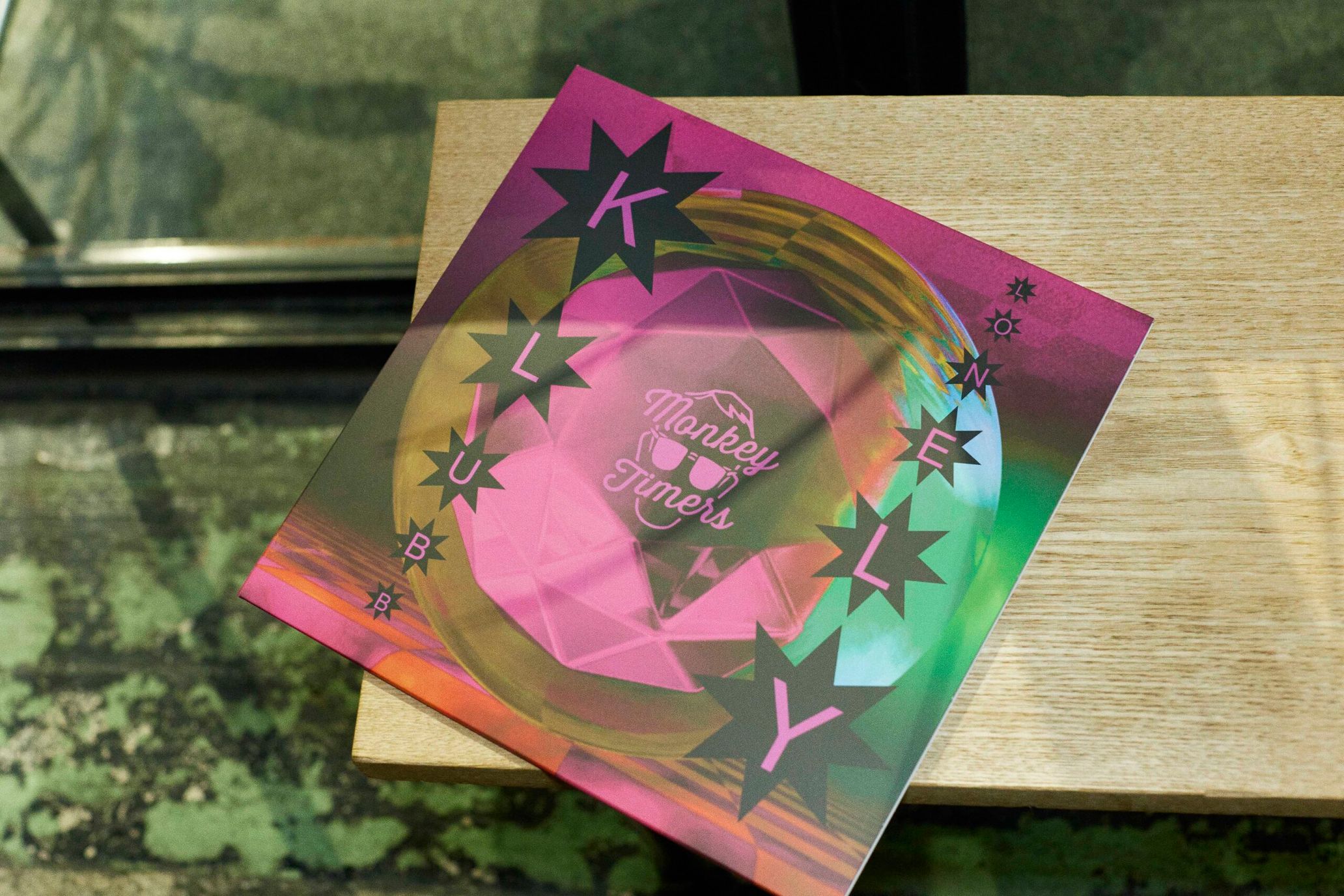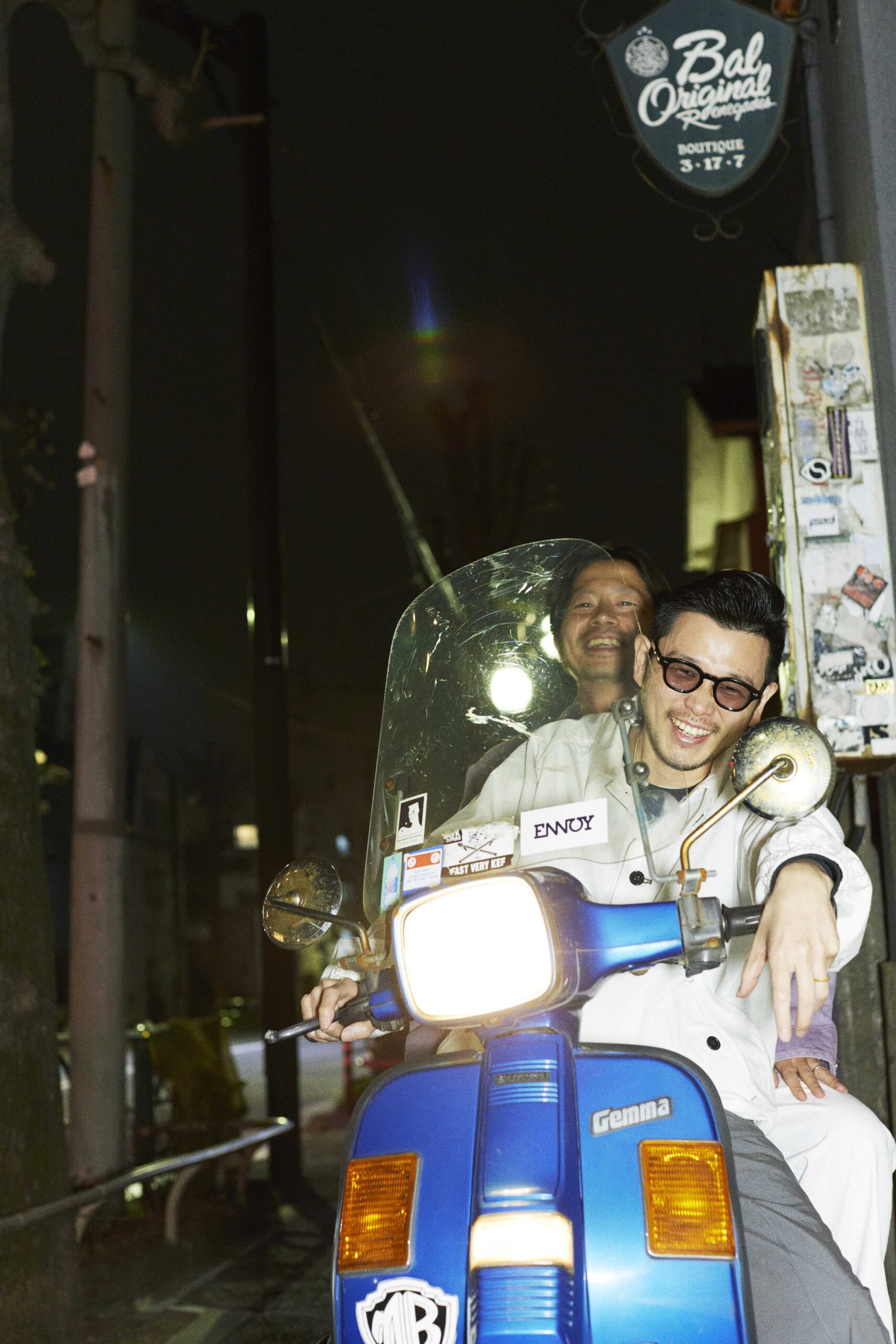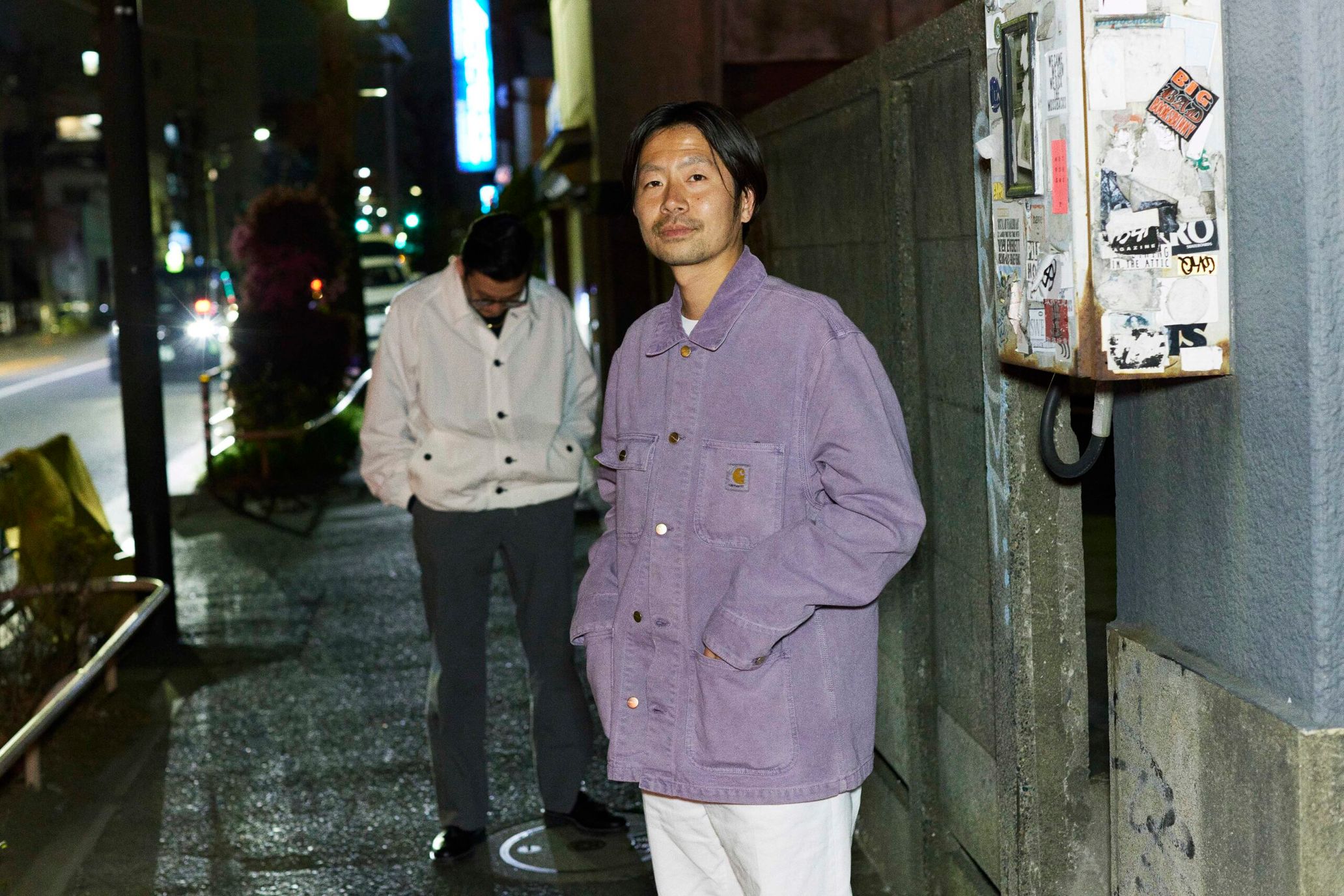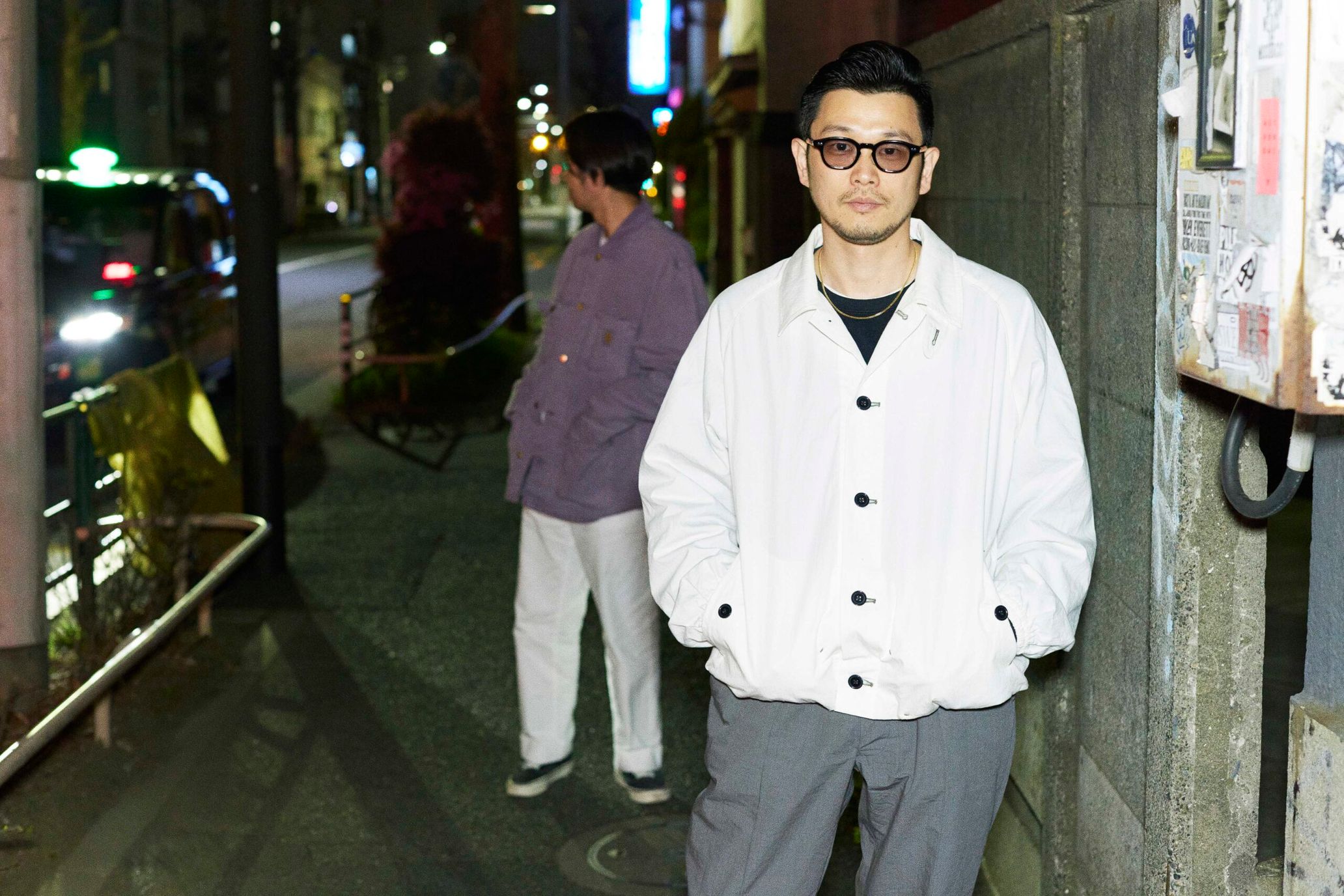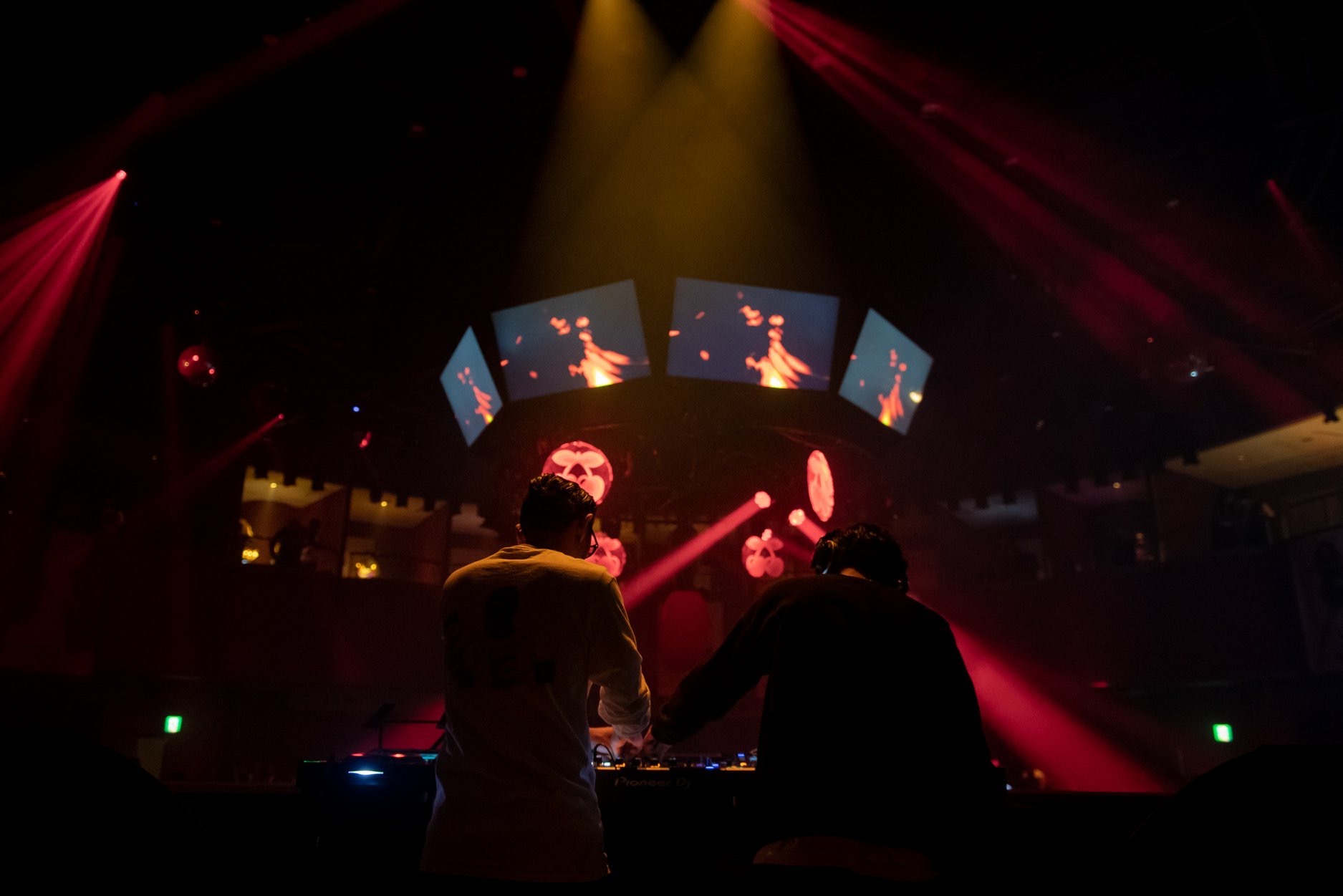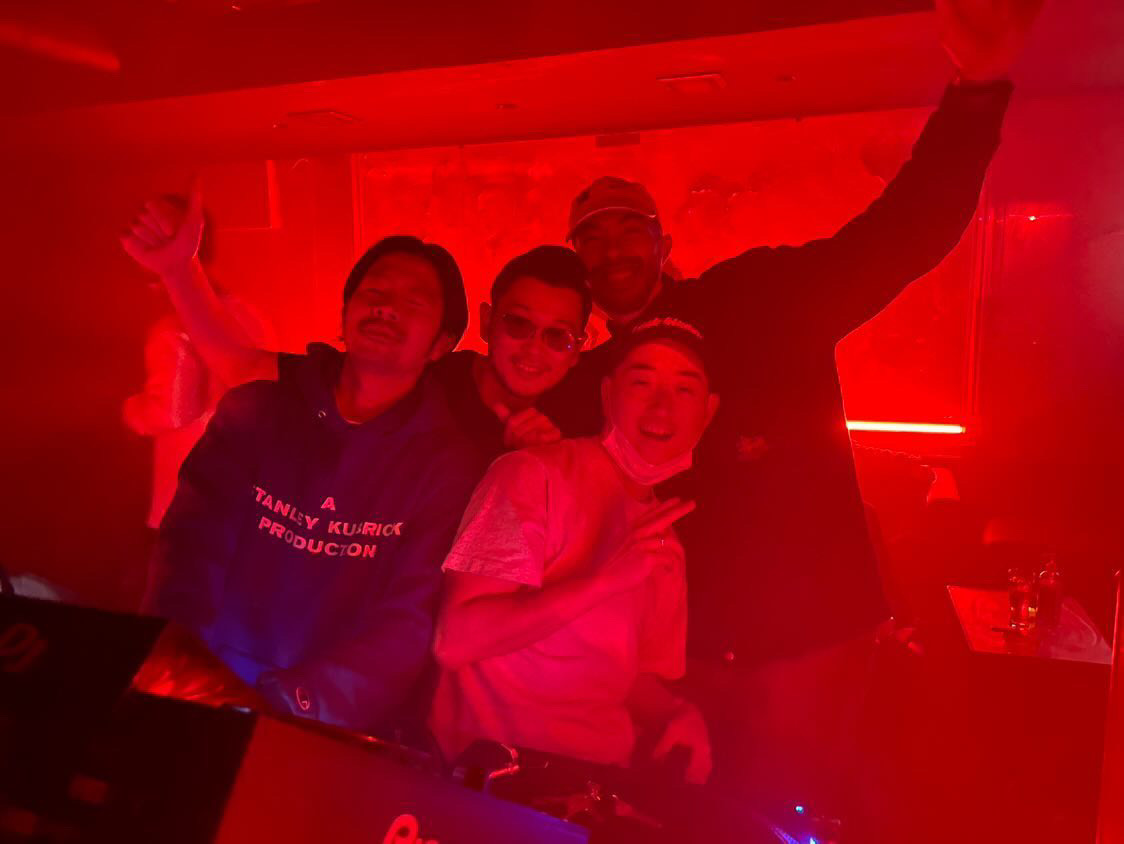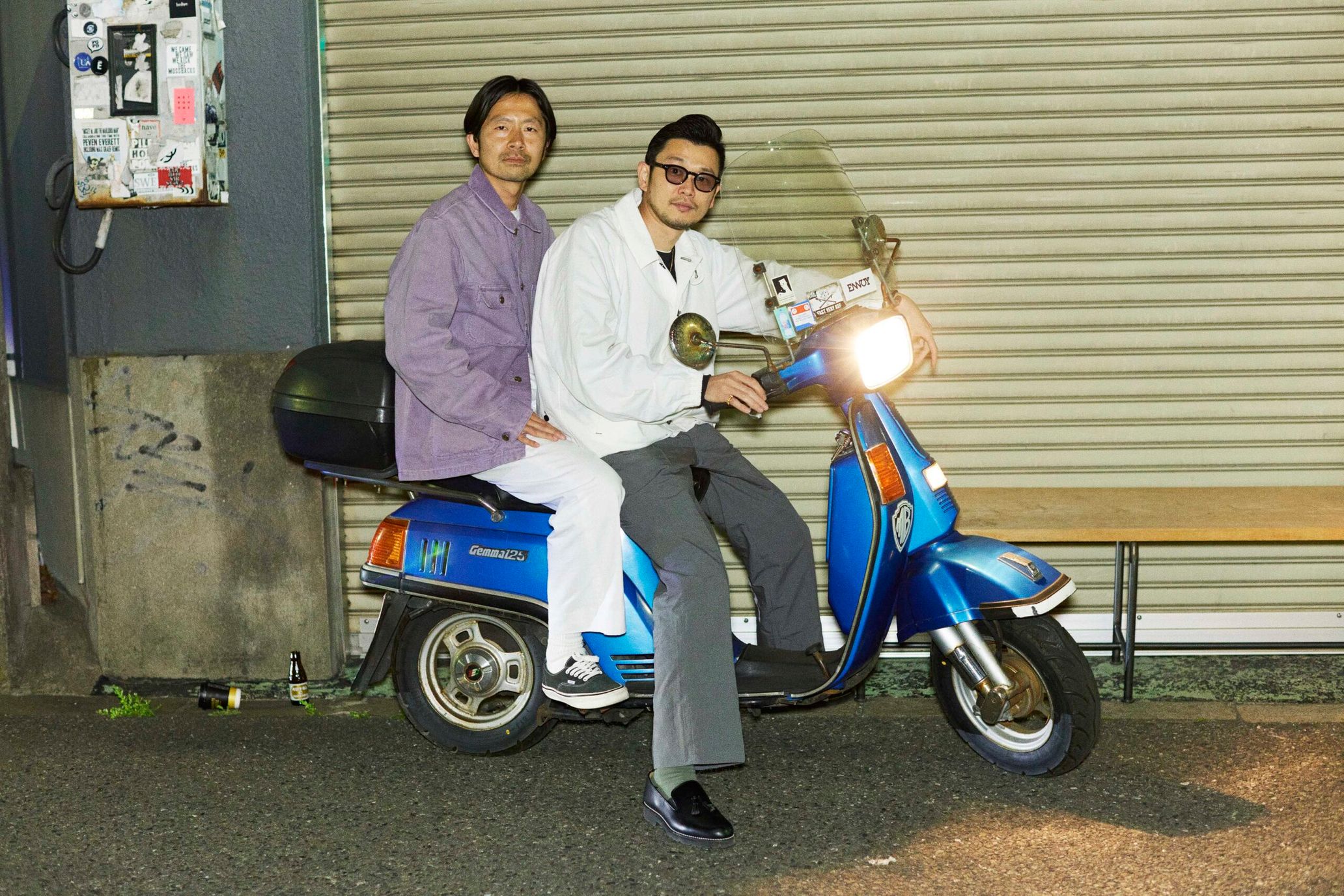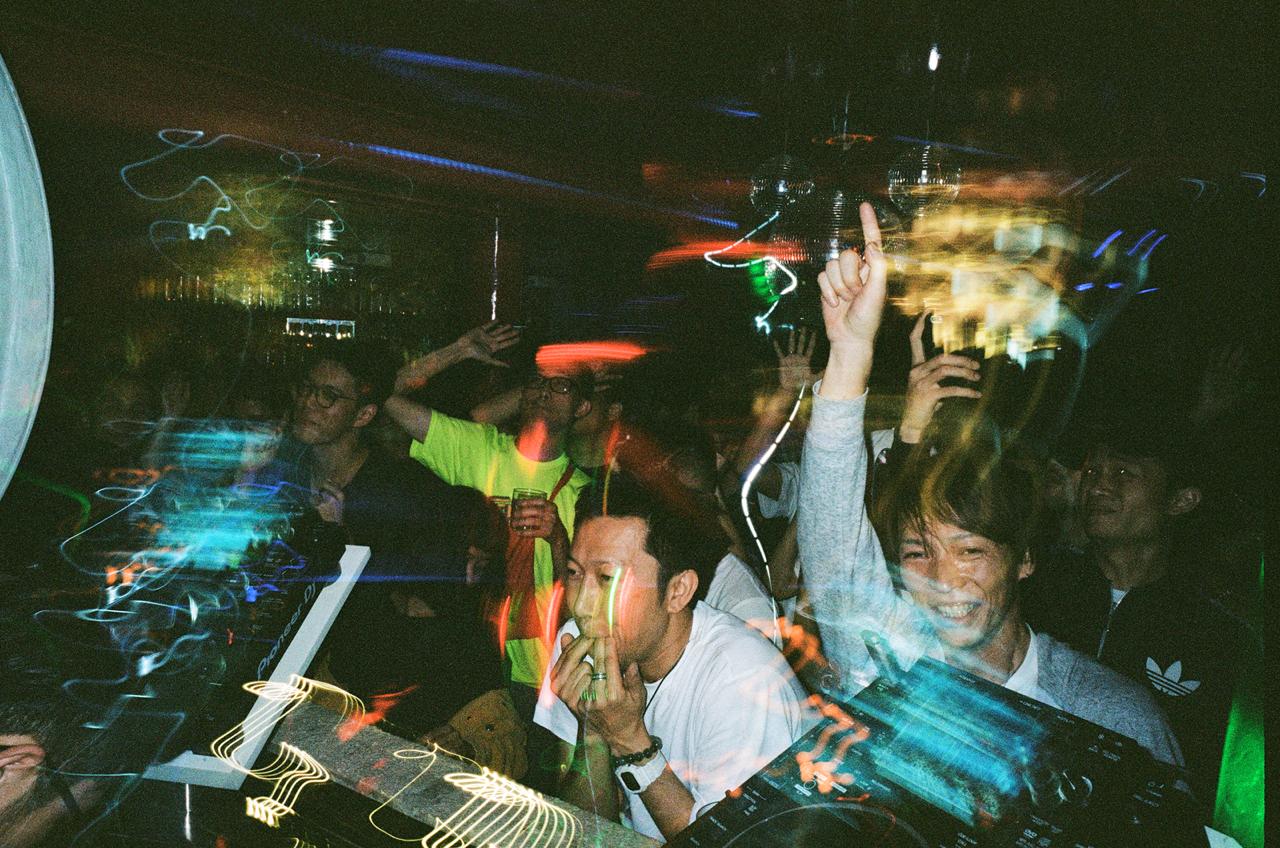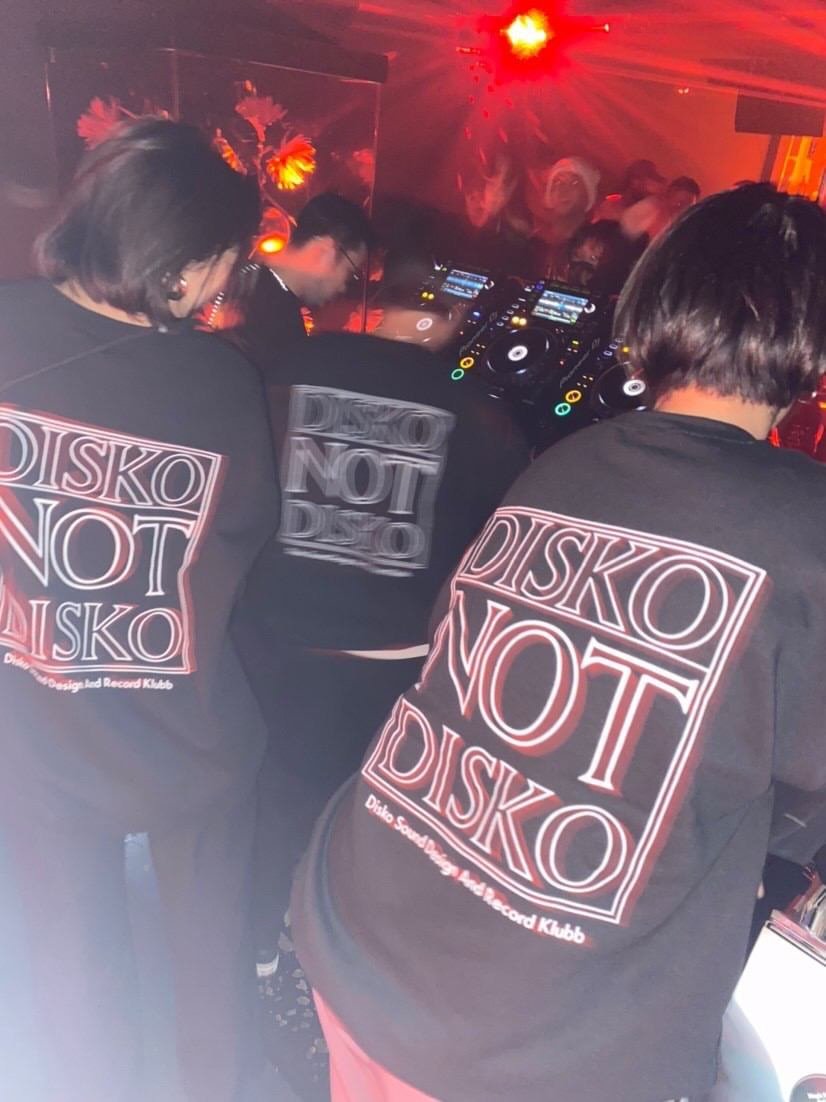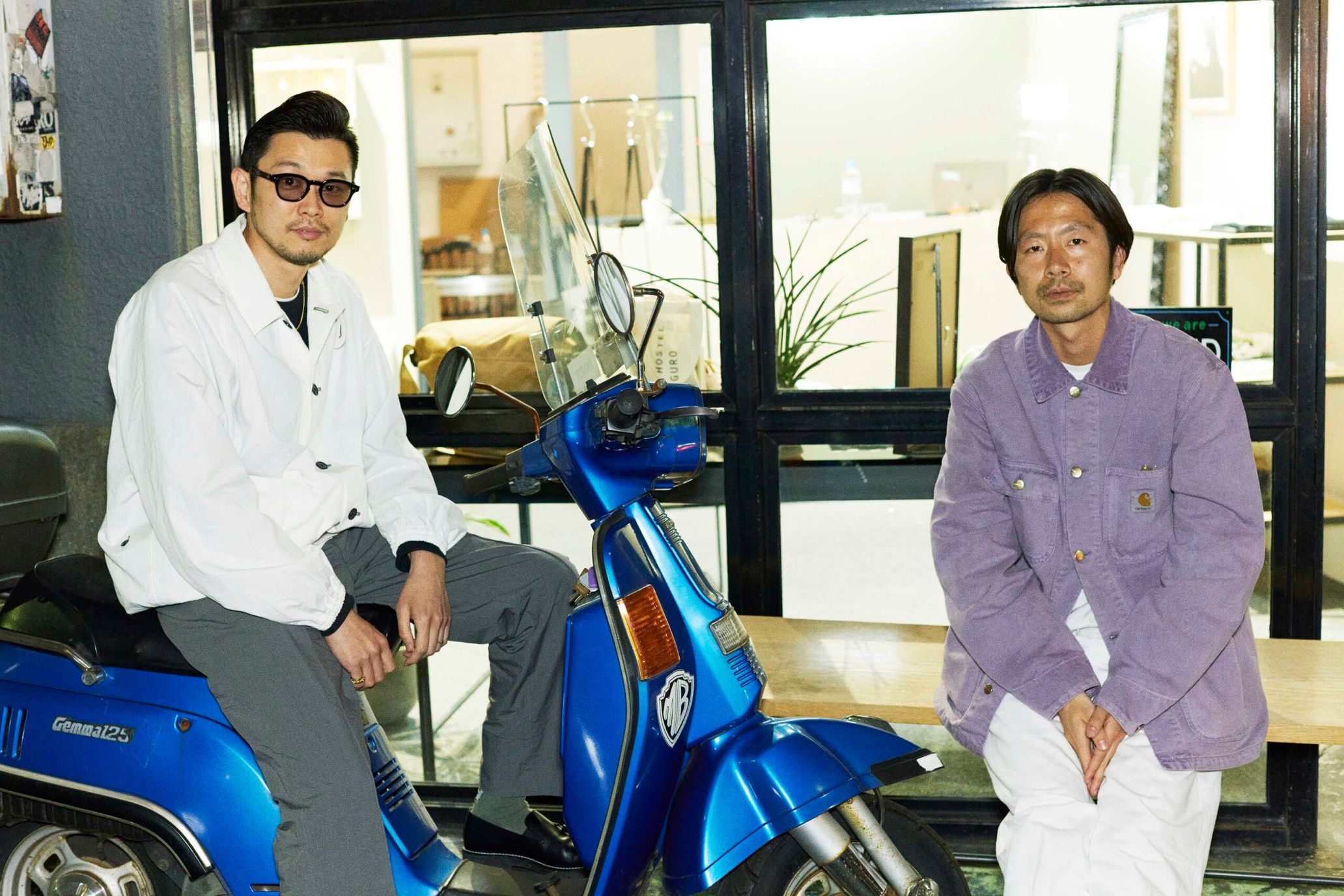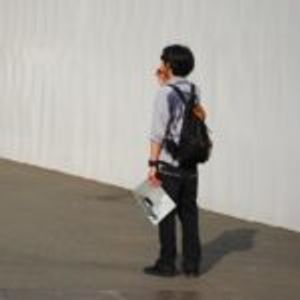With the background of underground culture and influences from New House and Disco Dub precursors from the early 2000s such as Rub N Tug, DJ Harvey, and Idjut Boys, DJ/Production duo Monkey Timers has been cultivating their career in the Tokyo dance music scene over years.
The duo consists of Takekawa from Bal and Hisashi from Ramidus. While working in the leading brands of the Tokyo fashion scene, the pair have paved their path in the club scene as the mainstay members of DISKO KLUBB — a collective comprised of new generational key figures of club parties and record labels.
This year, marking 13 years since the formation, the DJ unit has released their first full album, KLUBB LONELY. The duo initiated in the early 2000s and remains thriving in the 2020s in Tokyo’s club and street fashion scenes.
The album, completed during the coronavirus pandemic, is imbued with traditional Japanese musical expressions that Monkey Timers has honed through their experiences over years, unveiling the current state and near future of Tokyo. We hope this interview conveys you the real mood of Tokyo encircling the duo.
In order to step forward, we needed to release our original tracks
——It’s your 13th year, and you just finished your first full album. Why did you decide to release an album at this time?
Takekawa: Essentially, we were planning to release it in our 10th year. But then, covid hit…. Initially, the album was going to have more club tunes, but no clubs were happening in the world anymore, so we had to change the content. We wrote all the tracks about a year and a half ago, but it took time to mix and complete the tracks.
Hisashi: Meanwhile, demands for vinyls started increasing in the world that, depending on the pressing plant, we had to wait a year or two. The whole process took more time than usual, but I think we were able to put out the record at the right time. More events and outdoor festivals are opening back up these days, which means we have more opportunities to play our music at public events. We also got to do the album release party, which wouldn’t have been possible if it had been released earlier.
——For artists, I’m sure their first album is something that means a lot in their career. You’ve put out your original tracks before, but were you always thinking of releasing an album?
Takekawa: Yes. If we were full-time musicians, we would be churning out songs after songs, but since we work full-time in apparel companies, it inevitably takes time to make music.
Hisashi: Initially, we were merely interested in playing music at clubs as DJs.
——I see. You could’ve continued your musical career as DJs. But, why did you decide to make your original music and album?
Takekawa: We could’ve chosen our path as a DJ, but we wanted to pursue our career in the music industry more seriously, so we had to contrive a way to pave our path in that direction.
If you look at our older generation, there are big names like DJ NORI, Kenji Takimi, Force of Nature, and Chida. But, on the other hand, there are no prominent names our age and younger. In order to step forward, we needed to release our original titles.
Hisashi: Furthermore, when we started music, people were looking at us like, “They’re just some guys from the apparel business doing DJ for fun, right?” But we wanted to be validated as musicians, and in order for people to take us seriously, we thought we had to release our own music. No one was talking bad about us anymore after we released our mix CD and original tracks. It’s like people started accepting us wearing two hats.
Takekawa: It was a challenge to put out a mix CD for young people back then.
Hisashi: When we put out a mix CD, people didn’t give it a listen in the beginning as they had a preconceived bias towards us, like, “It’s just a lame mix by some apparel guys.”
In the 2010 Tokyo club scene, early 2000s New House and Disco Dub were not popular at all
Photography Masanori Naruse
——You’ve mentioned how you started your career as a DJ and about your musical roots in other interviews, so I’m not going to talk about it here — but how would you best describe the scene 13 years ago when you started Monkey Timers?
Hisashi: We used to have parties during the weekdays called Monkey Classics at bar shifty in Namikibashi (Shibuya), and people of our generation gathered at the party. Later, we did our anniversary parties and invited our seniors as guests.
Takekawa: Chida and Force of Nature were supportive of us; people at parties were mainly their friends, and there were not that many people close to our age other than our friends. Back then, in the Tokyo club scene, our favorite New House and Disco Dub artists from the early 2000s, like Rub N Tug, DJ Harvey, and Idjust Boys, were not popular at all….
——It was a post-Daft Punk age, and everyone was into Kitsuné, Ed Banger Records, and DEXPISTOLS.
Takekawa: It was a worldwide era of Electro, so we were in the complete opposite world [laughs].
Hisashi: But in retrospect, we were pure and living the best times of our lives.
——Later, Monkey Classics changed its name to DISKO KLUBB and became a record label and a collective. So how did it all start?
Hisashi: DISKO KLUBB was the name of the record label we came up with when we self-produced our first mix CD, which we released soon after our formation. We released a music video concurrently with the release of our 1st EP, MONK, and had Jun Murakami and many of our friends starring in the video. Later, Mr. Kurosaki, who’s in charge of booking at Ucess The Lounge (UC) in Harajuku, kindly asked us, “Are you interested in doing a party with all the members from your music video?”
——I have an impression that your UC parties were always packed with people.
Hisashi: There was a bit of a turning point for us when eleven opened in Nishiazabu, which used to be a different club called,Yellow. At the time, Todd Terje, who was popular with his hit “Inspector Norse,” was on a Japan tour, and we had a fortuitous opportunity of opening for him. As a result, we became a bit more recognized and had about 250 people coming to see our performance that night.
Later, we got to do parties at UC and invite almost all the artists we look up to, like, Kenji Takimi, Hiroshi Kawanabe, Kaoru Inoue, Force of Nature, and Tracks Boys.
——I remember you had PUNPEE as a guest performer once. It’s interesting to see your unique connection with various artists outside your genre.
Hisashi: I think we played together on the same stage for the first time when we performed as Monkey Timers at an after-party of the Ibaraki film festival.
Takekawa: Even before that, I had a chance to tour with PUNPEE. Until then, I’d never had the opportunity to interact with artists from other genres as a DJ. I remember being intimated when I first saw his set and performance. I was like, “I finally found the real DJ of our generation….” Before, I was confident as a DJ and thought no one was better than me, but I was shocked when I met him. He wasn’t known at all back then, but it’s no surprise that he’s now insanely huge [laughs].
Hisashi: He’s massive [laughs].
Takekawa: After he stunned me with his performance, I asked him to be our guest DJ at DISKO KLUBB. He showed up to the party with his original setlist mixing Hip-hop and House. He awed me and intimidated me once again [laughs].
We were able to stay in an environment where music and fashion were in close affinity
——Later, you moved the party to Vent in Aoyama, and had more guest performers like Mr. Ties, who is also featured in your album, and Justin Van Der Volgen, who mixed and mastered the album. Furthermore, you had other global artists performing at the party, like Gerd Janson, Prins Thomas, John Talabot, Jamie Tiller, San Proper, DJ Tennis, Tim Sweeney, Young Marco, Maurice Fulton, and Tornado Wallace.
Hisashi: That’s right. At Vent, we were able to invite performers from abroad, and from there on, we started gaining traction and recognition.
——Just out of curiosity, are there specific requirements to become a member of DISKO KLUBB?
Hisashi: Not really. We’re just friends or people we knew from before gathered as a crew. For example, Jitsumitsu is Take’s young homie, and Gyao was someone we played at a gig together in Kitakyushu and later joined us in Tokyo.
Takekawa: There are no requirements, but after we moved to Vent, we started allotting roles to each member. Jitsumitsu designs our flyers and T-shirts as he can do graphic designs. Gyao is currently based in the U.S., so we have him in charge of booking international artists. And Yamarchy works as a press for Domicile Tokyo, so we have him as a contact point for the media. We function as a team, with each member doing what they’re good at.
——I’ve also noticed that most of the members are working in the fashion industry: For example, Hisashi works at Ramidus, Takekawa works at Bal, Omi is from Ethos, Yamarchy is in charge of press for a brand, and Kazuhiko is from VCW.
Takekawa: Well, I got into dance music when I saw the performances by Rub N Tug, Michael K, and Paul T. at the MAJOR BLADE TOUR hosted by Stussy in 2005. I was already familiar with their music as my senior colleagues at Bal — Eda and Kaba — were always playing Rub N Tug’s Campfire and DJ Harvey’s Sarcastic Study Masters Vol.2 (a giveaway mix CD that SARCASTIC distributed in 2001) in the store.
The music that the cool colleagues around me were listening to and the parties I went to were all linked to fashion; basically, I was always in an environment where music and fashion were in close affinity.
Hisashi: I was influenced by my older brother and grew up listening to Hip-hop like Jurassic 5 and The Roots, but when I started working at my current company, which was formerly called Head Porter, I was listening to Wild Bunch’s DJ Milo, aka DJ Nature, discovered Hiroshi Fujiwara’s music, and later learned the nightlife in Tokyo from Kojiro of Fragment Design.
Speaking of music events, LIFE PARTNERS STUSSY TOUR hosted by Stussy in 2006, where Thomas, Eric D, and Paul T. performed, left a strong imprint on me.
People rave over disco tracks now more than ever
——I see. So, these events brought together New House and Disco Dub into the fashion scene. Harkening back even further, did you ever listen to any NY House classics, like Larry Levan?
Hisashi: Yes indeed, we were so deep into it. There was a phase where we were staunchly digging NY House music together.
Takekawa: We dug deep and got to David Mancuso and Larry Levan. But, we eventually realized that we wanted more than mere happy disco tunes. We were most influenced by Rub N Tug. But we obviously love Force of Nature and DJ Harvey’s early works, too, and they all have that manly, badass vibe in common — And we were fascinated by that.
Hisashi: At Stussy’s MAJOR BLADE TOUR, Rub N Tug was fighting with someone during his set, and I was awed like, “This is so insane.”
Takekawa: Thinking back, Rub N Tug was probably the biggest badass. Especially Thomas — we’re really influenced by his badass spirit.
Hisashi: He’s a badass, but he reads the flow and knows the right moment to play a House track. He just knows how to bring it in the perfect spot of his entire setlist of the night.
Takekawa: That’s true. It may only be one house track out of 20 songs on their setlist, but when he plays it, I go, “Wait, this actually sounds on point.”
Hisashi: He amazes us with his flow. But I guess we adopt his style — We would play techno all through, and in the booth, we would discuss when would be the best time to play a house or disco track.
In our album, we also covered Dusty Springfield’s “That’s the kind of love I’ve got for you,” but this song is a UK disco and not a US disco. We love NY House music, but this song reminds us that we fundamentally love UK sounds.
Takekawa: By the way, people rave over disco tracks now more than ever. Before, people never reacted to this kind of music, but kids nowadays ask for it.
People in their 20s hyping up the Tokyo club scene
——It seems like, in the modern Tokyo club scene, young people in their 20s and 30s are carrying on your influences from your older generation.
Takekawa: Very recently, I was talking with Kenji Takimi, and we were saying how music repeats itself every 20 years, and now kids are listening and digging New House and Disco Dub from the early 2000s, and young DJs are playing those types of music.
Hisashi: In real life, we see people going crazy over New House and Disco Dub in clubs. I would say Mitsuki in Shibuya is leading the young generational club scene.
Takekawa: The members from CYK are around 28, and Vinyl Youth is about 21. And they’re both heralding the music scene in Tokyo. Unfortunately, we’re not so young anymore, so we’re missing our chances again [laughs].
——No way [laughs]. I think Monkey Timers is bridging between the older and younger generations.
Takekawa: Recently, I had an opportunity to chat with a kid in his 20s, and apparently, Boiler Room was a blessing for his generation. He said he was always listening to Boiler Room when he was in middle school. We performed at Boiler Room around that time, so I guess we were his influence at least a bit.
——So, what was it like around you? What was the New House Disco Dub scene or community in Tokyo like back in the old days?
Takekawa: There weren’t that many guys our age.
Hisashi: Initially, when we were doing DISKO KLUBB events at Vent, we were looking for new fixed members. One day, Omi from Ethos, who was a regular member at Bridge in Shibuya, invited us, saying, “Come out here. There’s a cool guy I want you to meet!” and introduced us to Yamarchy, who is slightly younger than us.
Yamarchy is working both in the fashion and music industry — working for Cannabis and Domicile Tokyo and in charge of booking at Mitsuki. He’s like the hub of a vast network. Obviously, we are a part of his community, too, and we are one of the very few regular artists in Mitsuki; he’s letting us do the DISKO KLUBB spinoff event called DISKO (NOT DISKO.)
Takekawa: Regarding the current club scene in Tokyo, CYK is attracting kids of their generation and revving up the scene. Also, they’re not only specified in House but also connected to rappers; they’re pretty much building a new music scene. In our days, everyone was closed off. We never played with people outside of our genre, and everyone was off doing their own thing [laughs].
——People from the older generation in the music and fashion industry weren’t interested in establishing relationships with people from other genres. Perhaps, they felt competitive toward others. But not so much anymore as we’re all grown up now, but it was different then.
Takekawa: We gradually became less closed off.
Hisashi: In that sense, people nowadays treat each other more equally and are more united.
——With the pandemic, it’s been hard to see what’s been going on in the club scene in the past few years, but it seems like we can expect to see some new moves soon.
Takekawa: Older people stopped going to clubs since the pandemic hit. In other words, the older generation has been weed out from the scene, and younger people are now rising to the center of the scene. I think the shift is evident in Mitsuki — There’s literally no one older than my generation. The younger generation that has been around since pre-covid is emerging to the center of the scene.
Hisashi: Recently, my friend from abroad called me. He’s planning to come to Japan when Covid is over, and he said that Mitsuki is the first place he would go. I guess Mitsuki is the current hot spot in Tokyo.
Takekawa: There are a lot of young kids at Mitsuki, and they all look hip. It’s not like they’re wearing some classic brand clothes, though. The place is always playing some niche music, but the floor is popping, and it’s a different vibe from how it used to be.
Hisashi: It’s become a one-and-only place where fashion and music are linked together.
We wrote the album imaging the infused a Japanese essence into it
——And now, after years of paving the path as Moneky Timers, you are finally releasing your first album. I can’t wait to see the audience’s reactions at your gigs.
Takekawa: Honestly, we’ve been feeling like we’ve reached the limit as DJs, and we’re curious how this album is going to change our current status. It’s probably nothing special for bands and singers to release an album and play shows, but it’s a new attempt for us.
It’s also an experimental challenge for us as we put a lot of laidback tunes in the album.
Hisashi: The album will be available on all digital platforms and subscription services. We also want to go global, so we’re releasing vinyls from the record label founded by Japanese members in Amsterdam, Sound of Vast, as a collaboration record. We’re looking forward to seeing the reactions from our international audience.
——Me, too. I’m curious to see how the real sound of Tokyo resonates abroad.
Takekawa: We made the album focusing on packing in the Japanese aesthetic. We adopted the chord progressions of our musical influences and sampled our favorite Disco tracks.
Hisashi: We’ve listened to a wide range of music, and we like some complex music that could be hard to understand for some people. But we didn’t want ours to be too complex. Japanese people are good at curating music and fashion from abroad and reinterpreting them into their own style, which is pretty much what we did with our album. As a result, I hope the album appears unique.
——So, what makes Monkey Timers unique?
Hisashi: For the album, we’ve put a lot of effort into the laidback tracks. Ultimately, we honed our music through performing, so we know how to turn these laidback tunes into club tunes. If Monkey Timers played Open to Last, we would probably play the entire album with the same sequencing.
Takekawa: Also, Sk8Thing of C.E designed the album cover. We were humbled to have him do the art for us, but he kindly accepted our offer said, “Are you sure you want me to do the cover art? You know, there’s a lot of young talented artists around.” We gave him the demo beforehand, and he told us, “There’s a Japanese vibe to this album” So, I think he nailed it and captured our ideas very well.
——How did you come up with the title, KLUBB LONELY?
Takekawa: I’m sure people missed clubbing during the pandemic. And while I was ruminating over the circumstance, the song “Club Lonely” by Lil’Louis popped up in my head, and it hit me, “This is it!” So, we ended up sampling the song [laughs].
——I just can’t wait to see the audience’s reactions even more.
Hisashi: We’ll be playing in big cities in Japan, but we’re also playing in Jakarta and Bali — Can’t wait to party.
MONKEY TIMERS
With the background of underground culture and influences from New House and Disco Dub precursors such as DJ Harvey and Idjut Boys, Monkey Timers is a DJ/Production unit garnering attention in Japan and internationally, heralding the new phase of the dance music scene. In 2009, they founded DISKO KLUBB.
https://www.diskoklubb.com
Instagram :@diskoklubb_tokyo
KLUBB LONELY
(DISKO KLUBB/Sound Of Vast)
Monkey Timers’ long-awaited first full album, marking 13 years of its formation. The album comes in a set of two analog discs and is released in a limited edition of 500 copies worldwide. The album is full of collaborations with various vocalists, producers, and musicians: Featuring the cover of Dusty Springfield’s “That’s the Kind of Love I’ve Got for You,” welcoming the singer Lisa Tomlinson; the talented DJ based in Berlin who takes the helm of the European club scene, Mr. Ties; the House artist from Okayama garnering worldwide attention, Keita Sano; and up-and-coming Japanese-American Hip-hop duo, MIRROR.
Photography Teppei Hoshida
Text Analog Assasin

